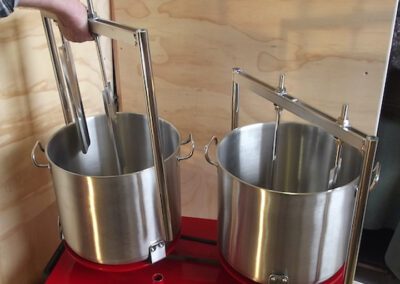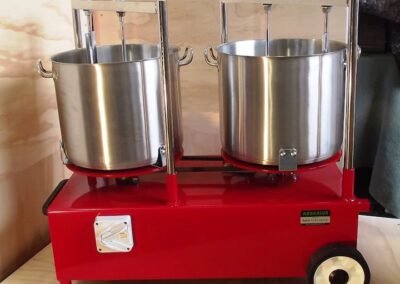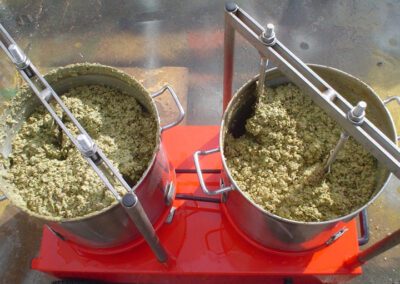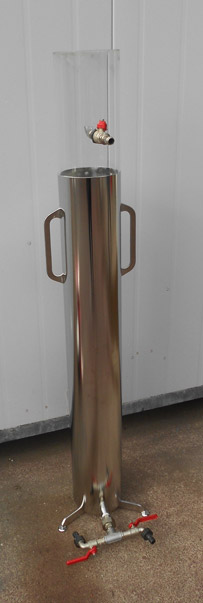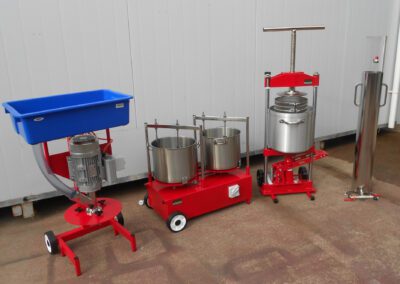AQUARIUS OliVE oil Equipment
Key Benefits
Cost-Effective
High-quality Equipment for an affordable price.
Portable
Easy to move and can easily be transported to different
locations.
Easy to Clean
Easy to clean, just take outside and hose down.
Equipment
Olive Oil Equipment
The Aquarius Olive Oil Equipment is an elegant and ingenious set of components that can handle up to 30 kilograms of olives per hour.
Including filling and emptying, a 15-kilogram batch of the olive mixture takes about 25 minutes to press. The Olive Oil Press’s ease of use makes it easy to clean up, it can be taken outside and hosed down. Its portability also means it can be transported to other locations when needed.
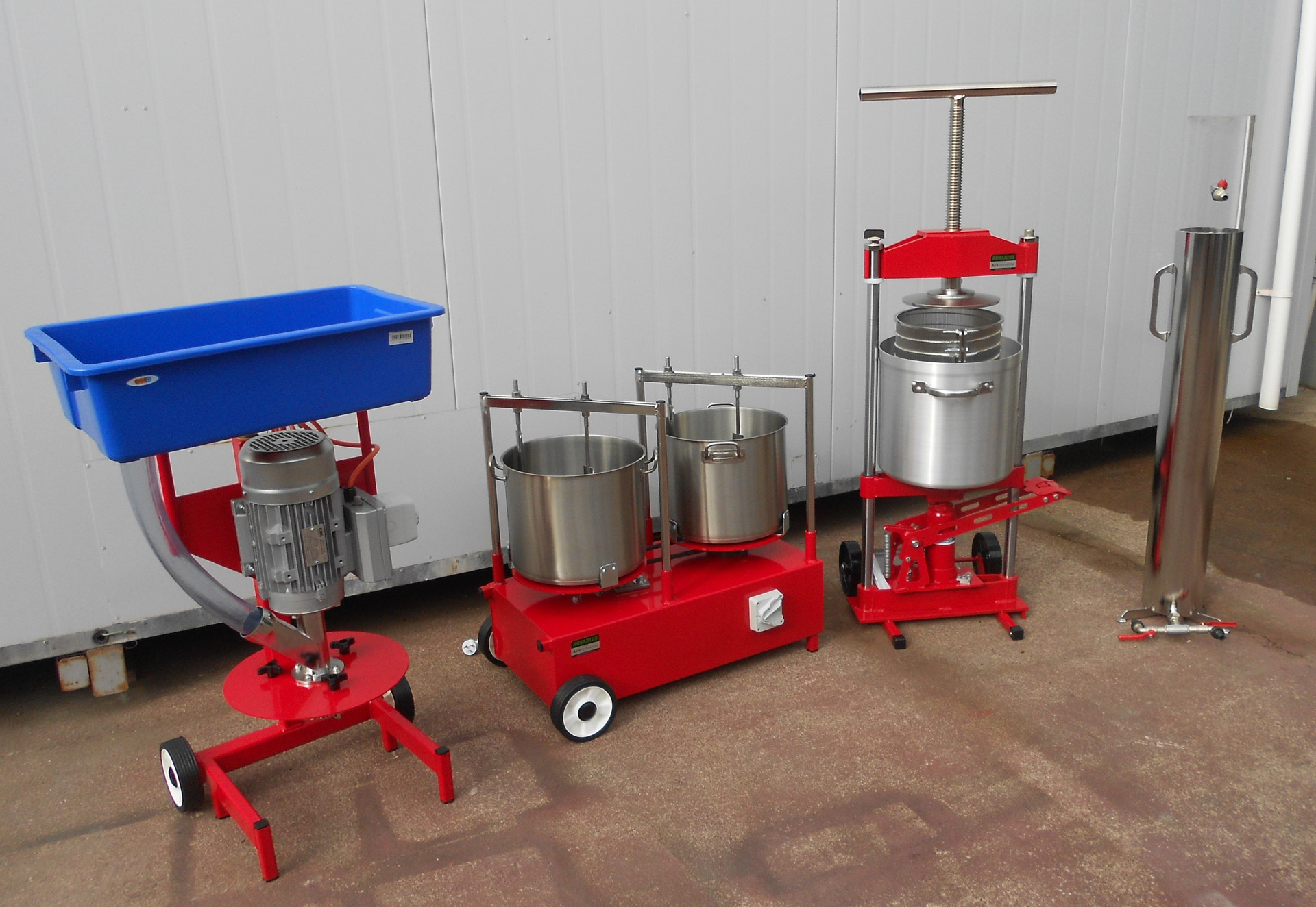

Olive Oil Equipment
The 4 Components
The Aquarius Olive Oil Equipment has four components that all have an important part in the olive oil production process:
Once you have reduced the olives to a paste(milling) and broken down the cells to release the oil (malaxing), use the Aquarius Olive Oil Press to extract the liquid. First, turn the top screw to apply moderate pressure, then the hydraulic jack is gently foot pumped to apply up to 10 tonnes of pressure from below. The olive paste is contained in a stainless steel
cylinder with slits cut in it which sits in a pot with a pouring spout. By using a series of acrylic mats and stainless steel plates, the press
achieves close to the total extraction of the oil that can be extracted by cold pressing. The whole top assembly swings open for filling and emptying.
The fluids extracted from the pressing contain oil, water, and vegetable juice. The process of separation of the oil is primarily a matter of waiting for gravity to do most of the work, then drawing off either the watery sediment or the oil which floats on top of it.
See below for more information on the components:
01
Milling
Reducing the olives to a paste
02
Malaxing
To break down the cells to release the oil
03
Pressing
To extract the olive liquids
04
Separating
Draws the oil from the water and sediment
The Aquarius Olive Oil Equipment is ideal for small lifestyle olive growers meeting unique needs, and want to produce quality virgin olive oil.
Work With us
KEY FEATURES:
Some key features of the Olive Oil Equipment include the simplicity of operation and the robust construction which have made this a reliable press for the extraction of quality virgin oil. As mentioned above, it can handle 15kg batches of olives at a time. The clean-up time is minimal, and its portability provides ease of use and is transportable. This means the product can be put into a station wagon and taken down the road to another grower if needed.
Quality
Easy to use and Clean
Cost-effective
Portable
Price
What’s Included?
Seafreight can be arranged to main ports
The Aquarius 30kg Olive Oil Equipment includes
Grinder Hammermill
Double Malaxer
Aquarius Olive Oil Press
Stainless Malaxer pots
Separator 17 litre
WORK WITH US
WE WOULD LOVE TO WORK WITH YOU.
Get in touch, and we can make it happen.
Val and Peter Hopperus
Peter - Mobile +64 274 758795
Val - Mobile +64 21 2383111
sales@axisindustrial.co.nz



